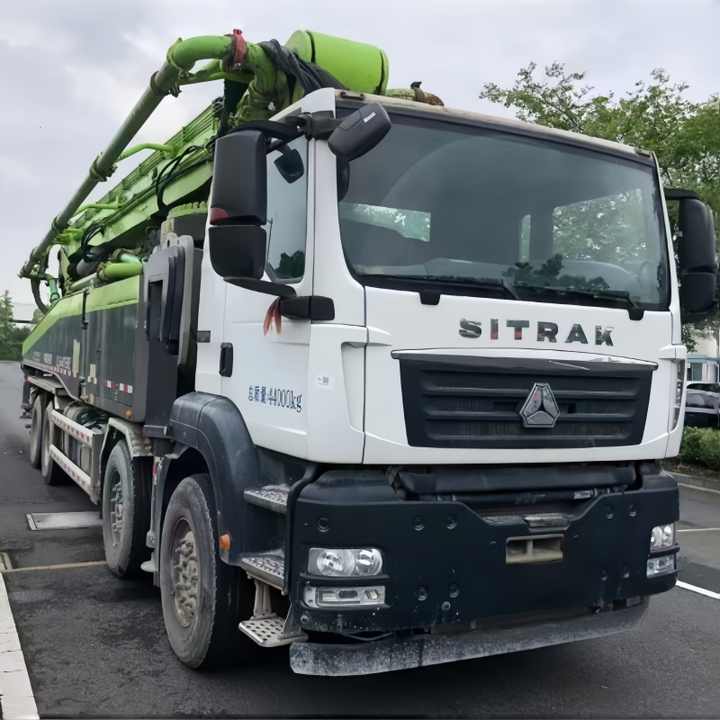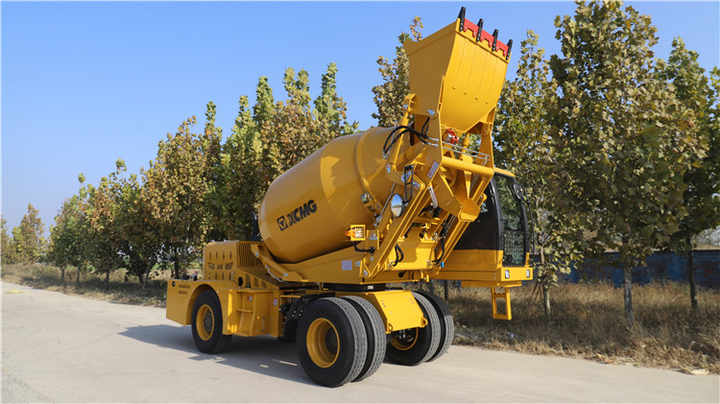Whatsapp: 8613978656878
Email: admin@slojx.com
Essential Strategies for Operating Concrete Pumps in Cold Weather Conditions
Views :
Update time : 2025-11-04
When temperatures drop and winter conditions set in, concrete contractors face unique challenges in maintaining their project schedules. The question "Can concrete pumps work in cold weather?" is frequently asked by professionals who need to continue operations despite freezing temperatures. The answer is yes, but it requires careful planning, proper equipment preparation, and adherence to specific protocols to ensure successful concrete placement.
Working with concrete in temperatures around 10 degrees Celsius (50 degrees Fahrenheit) or lower presents significant obstacles that can impact both the quality of the concrete and the efficiency of the pumping operation. Many contractors experience work delays during cold weather, which may force them to operate under harsh conditions. Understanding the proper techniques and precautions becomes essential for any concrete contractor facing winter projects.

The Critical Role of Hot Water in Cold Weather Concreting
One of the most effective strategies for preventing concrete from freezing during pumping operations is the use of heated water in the concrete mix. When temperatures drop, concrete can freeze in the hopper or boom system, causing severe operational setbacks. Once concrete freezes, it cannot be pumped properly until the frozen sections are removed, resulting in costly delays and potential equipment damage.
Using very hot water to prepare the concrete mixture serves as a preventive measure against freezing. This technique applies whether using ready-mixed concrete or on-site batching. The heated water helps maintain the concrete's temperature during transportation and pumping, which is crucial for preserving the concrete's quality and workability. When the ambient temperature is 50°F or lower, the concrete must maintain a minimum temperature of 50°F before placement into forms. While it's possible to heat mixing water up to 170°F, experts recommend avoiding concrete mixing when temperatures drop below 35°F.
Equipment Preheating and Protection Systems
Another vital strategy involves using concrete pump discharge line preheating devices. These specialized systems heat the pipeline during concrete delivery, preventing the mixture from freezing within the pipes. Preheating equipment can utilize various heat sources, including fuel oil, electricity, or steam, depending on the specific setup and project requirements.
When implementing preheating systems, careful temperature monitoring is essential to prevent concrete overheating, which could compromise the mixture's integrity. Regular maintenance and servicing of preheating equipment ensure optimal performance, with timely replacement of worn components being crucial for reliable operation during cold weather projects.
Comprehensive Pipeline Protection Methods
Protecting boom pipes from freezing temperatures requires a multi-faceted approach. Effective methods include wrapping boom pipes with high-quality insulating materials, utilizing foam pipe insulation, and implementing proper freeze-proofing techniques for all pipeline components. These protective measures should be applied both before and between concrete pours to maintain consistent temperature control.
Exterior piping demands additional attention, with construction blankets serving as an effective solution for covering unused pipeline sections. This approach helps maintain pipeline temperature and prevents unexpected freezing that could disrupt operations. The proper grading and positioning of pipeline components also play crucial roles in preventing water accumulation and subsequent freezing within the system.
Temperature Management and Safety Protocols
Maintaining appropriate concrete temperature throughout the pumping process requires constant vigilance and proper equipment. While batching concrete in conditions below 35°F is not recommended, it can be accomplished by carefully heating mixing water to appropriate temperatures. However, this process demands strict adherence to temperature limits and continuous monitoring to ensure concrete quality.
Employee safety becomes paramount when operating in extremely cold conditions. Workers should be equipped with appropriate cold-weather clothing, including insulated gloves and jackets that allow for safe equipment operation while providing adequate protection from the elements. Additionally, all personnel should receive training on recognizing cold-related health risks and implementing appropriate safety measures.

Manufacturer Guidelines and Equipment Limitations
Following manufacturer specifications and temperature limitations is crucial for maintaining equipment integrity and ensuring safe operations. Ignoring manufacturer warnings regarding temperature limits can result in equipment failure, including potential weakening or breaking of concrete boom components. Each piece of equipment has specific operational parameters that must be respected, particularly in challenging weather conditions.
Zoom GlobalMech Corp, as a leading manufacturer of concrete mixer pumps and concrete trailer pumps, emphasizes the importance of adhering to recommended operational procedures during cold weather. The company's dedication to producing high-quality, efficient concrete conveying equipment extends to providing comprehensive guidance for challenging environmental conditions.
Best Practices for Successful Cold Weather Operations
Successful cold weather concrete pumping requires implementing a comprehensive strategy that addresses all aspects of the operation. This includes proper site preparation, equipment winterization, temperature monitoring systems, and contingency planning for unexpected weather changes. Contractors should develop detailed cold weather protocols that encompass pre-pour preparations, during-pour monitoring, and post-pour protection measures.
Regular equipment inspection and maintenance become even more critical during winter operations. This includes checking heating systems, insulating materials, and all temperature-sensitive components. Creating a detailed maintenance schedule helps prevent equipment failures that could be particularly problematic in cold weather conditions.
Conclusion
Operating concrete pumps in cold weather is entirely feasible with proper preparation, appropriate equipment, and adherence to established protocols. The key lies in understanding the challenges posed by low temperatures and implementing comprehensive solutions that address both concrete quality and equipment protection. By following these strategies and maintaining high safety standards, contractors can successfully continue their operations throughout the winter months while delivering quality results that meet project specifications and client expectations.
The investment in proper cold weather equipment and procedures pays dividends through reduced project delays, improved concrete quality, and enhanced operational efficiency. As the construction industry continues to demand year-round productivity, mastering cold weather concrete pumping techniques becomes an essential skill for any serious concrete contractor.
Related News
Read More >>
 Specifications & Guideline
Specifications & Guideline
11 .09.2025
Specifications & Guidelines for Safe Concrete Pumping Operations



